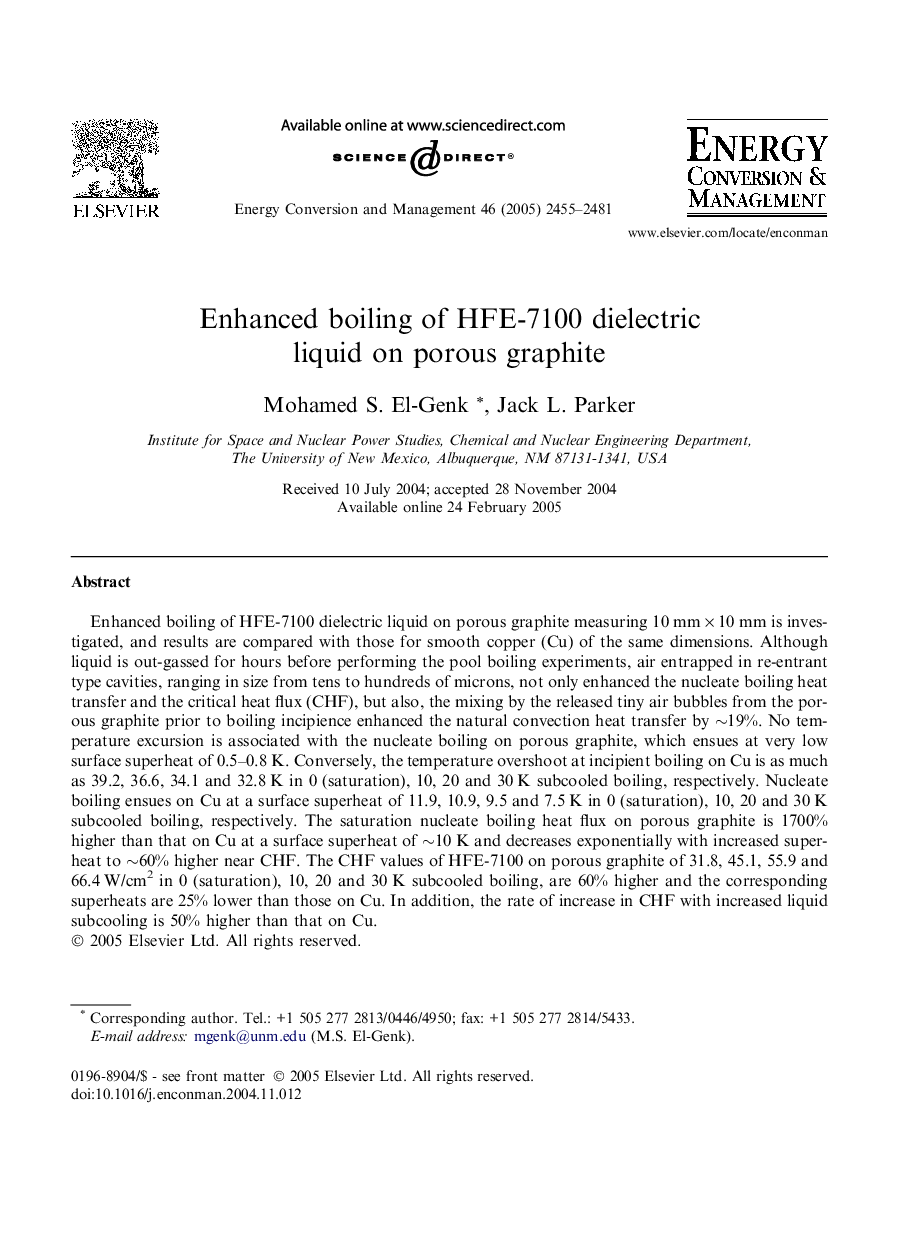| Article ID | Journal | Published Year | Pages | File Type |
|---|---|---|---|---|
| 762736 | Energy Conversion and Management | 2005 | 27 Pages |
Enhanced boiling of HFE-7100 dielectric liquid on porous graphite measuring 10 mm × 10 mm is investigated, and results are compared with those for smooth copper (Cu) of the same dimensions. Although liquid is out-gassed for hours before performing the pool boiling experiments, air entrapped in re-entrant type cavities, ranging in size from tens to hundreds of microns, not only enhanced the nucleate boiling heat transfer and the critical heat flux (CHF), but also, the mixing by the released tiny air bubbles from the porous graphite prior to boiling incipience enhanced the natural convection heat transfer by ∼19%. No temperature excursion is associated with the nucleate boiling on porous graphite, which ensues at very low surface superheat of 0.5–0.8 K. Conversely, the temperature overshoot at incipient boiling on Cu is as much as 39.2, 36.6, 34.1 and 32.8 K in 0 (saturation), 10, 20 and 30 K subcooled boiling, respectively. Nucleate boiling ensues on Cu at a surface superheat of 11.9, 10.9, 9.5 and 7.5 K in 0 (saturation), 10, 20 and 30 K subcooled boiling, respectively. The saturation nucleate boiling heat flux on porous graphite is 1700% higher than that on Cu at a surface superheat of ∼10 K and decreases exponentially with increased superheat to ∼60% higher near CHF. The CHF values of HFE-7100 on porous graphite of 31.8, 45.1, 55.9 and 66.4 W/cm2 in 0 (saturation), 10, 20 and 30 K subcooled boiling, are 60% higher and the corresponding superheats are 25% lower than those on Cu. In addition, the rate of increase in CHF with increased liquid subcooling is 50% higher than that on Cu.
